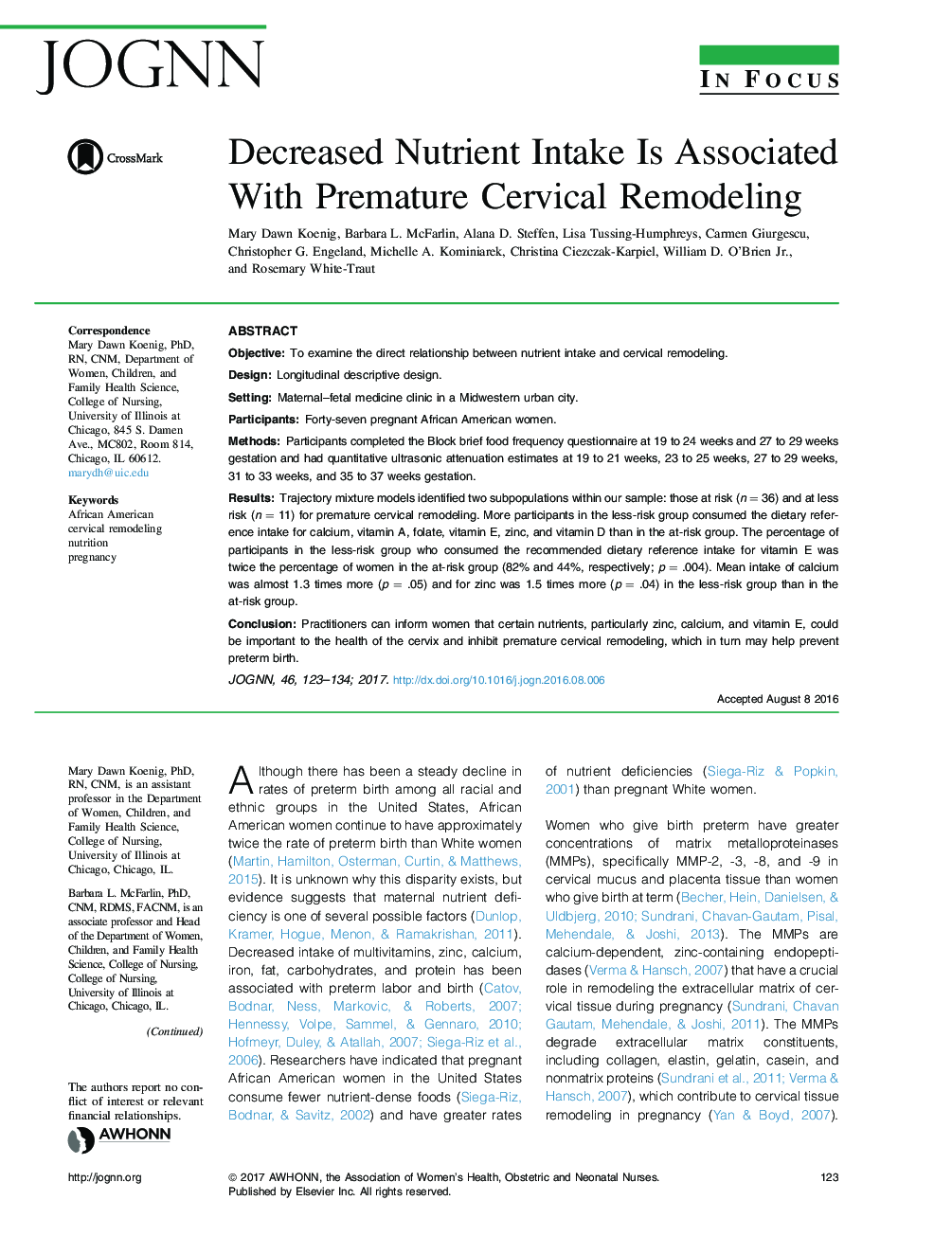| Article ID | Journal | Published Year | Pages | File Type |
|---|---|---|---|---|
| 5565636 | Journal of Obstetric, Gynecologic & Neonatal Nursing | 2017 | 12 Pages |
ObjectiveTo examine the direct relationship between nutrient intake and cervical remodeling.DesignLongitudinal descriptive design.SettingMaternal-fetal medicine clinic in a Midwestern urban city.ParticipantsForty-seven pregnant African American women.MethodsParticipants completed the Block brief food frequency questionnaire at 19 to 24 weeks and 27 to 29 weeks gestation and had quantitative ultrasonic attenuation estimates at 19 to 21 weeks, 23 to 25 weeks, 27 to 29 weeks, 31 to 33 weeks, and 35 to 37 weeks gestation.ResultsTrajectory mixture models identified two subpopulations within our sample: those at risk (n = 36) and at less risk (n = 11) for premature cervical remodeling. More participants in the less-risk group consumed the dietary reference intake for calcium, vitamin A, folate, vitamin E, zinc, and vitamin D than in the at-risk group. The percentage of participants in the less-risk group who consumed the recommended dietary reference intake for vitamin E was twice the percentage of women in the at-risk group (82% and 44%, respectively; p = .004). Mean intake of calcium was almost 1.3 times more (p = .05) and for zinc was 1.5 times more (p = .04) in the less-risk group than in the at-risk group.ConclusionPractitioners can inform women that certain nutrients, particularly zinc, calcium, and vitamin E, could be important to the health of the cervix and inhibit premature cervical remodeling, which in turn may help prevent preterm birth.
